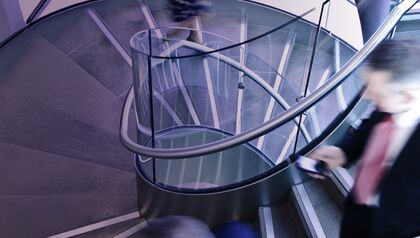Originally introduced in 1958 as part of the Small Business Tax Revision Act, the Section 179D Energy Efficient Commercial Building Tax Deduction (Section 179D) has gone through several iterations. Some of the biggest changes were created by the Inflation Reduction Act (IRA) of 2022, though there have been more recent updates since then.
Learn more about how the Section 179D tax credit works and how to qualify as well as some example scenarios and frequently asked questions (FAQs).
What Is the Section 179D Deduction?
The Section 179D deduction, also called the Energy Efficient Commercial Buildings Deduction, is an incentive that allows building owners or designers of such buildings to claim a tax deduction, which reduces the basis in the building for the installation of qualifying systems that promote energy efficiency. The qualifying system types include interior lighting, heating, ventilation and air conditioning (HVAC), and upgrades to the building envelope.
This applies to property placed in service as part of a new construction or a building upgrade project.
Sec. 179D After the Inflation Reduction Act (IRA)
As mentioned above, this deduction was enhanced in the IRA, and it now allows for:
- A deduction of up to $5.81 per square foot of the subject property (up from $1.88) for tax year 2025
- The ability for tax exempt entities to allocate the tax deduction to designers (previously, only government owners could allocate the deduction to the building designer)
- The ability to re-claim the deduction on the same building every four years for additional upgrades
- The establishment of a prevailing wage and apprenticeship standard, which requires prevailing wages to be paid to construction workers and exposure for apprentices in order to maximize the deduction
How To Calculate the Section 179D Tax Deduction
There are two parts of the Section 179D deduction: the base deduction and the enhanced deduction. But keep in mind, the total deduction cannot be more than the amount spent on the upgrades.
|
Deduction Type |
Base Rate |
Increment per Percentage Point Above 25% |
Max Deduction |
|
Base Deduction 179D(b)(2) |
$0.58/sq ft |
+$0.02/sq ft |
$1.16/sq ft |
|
Enhanced Deduction 179D(b)(3) |
$2.90/sq ft |
+$0.12/sq ft |
$5.81/sq ft |
Section 179D(b)(2) Base Deduction
The base amount of the deduction is 58 cents per square foot, and the deduction is increased by 2 cents for each percentage point in energy efficiency increase that exceeds 25%, up to $1.16 per square foot. For every percentage point, the building’s energy efficiency exceeds a 25% threshold (described in more detail below), and the deduction increases incrementally up to a 50% energy savings threshold.
Section 179D(b)(3) Enhanced Deduction
For buildings meeting the prevailing wage and apprenticeship requirements, a bonus deduction of $2.90 per square foot is available. The deduction can also be increased by 12 cents for each percentage point increase in energy efficiency above 25%, up to $5.81 per square foot.
Section 179D Tax Deduction Building Qualifications
The HVAC, interior lighting or building envelop equipment must be installed on or in a building that is located in the U.S.
Notice 2006-52 provides for the use of Department of Energy approved software to complete an energy modeling analysis using the plans and specifications of the subject property referencing the American Society of Heating, Refrigerating, and Air Conditioning Engineers (ASHRAE) standard 90.1 (2007) and the Illuminating Engineering Society of North America, as of 2025.
It must be property for which depreciation or amortization is allowable. Then, the energy modeling analysis must be certified by a licensed professional engineer in the state where the building is located. It should demonstrate that the total annual energy and power costs for the specified systems are reduced by at least 25% compared to a reference building that meets the minimum requirements of Reference Standard 90.1.
Qualifying as a Building Owner or Designer
Notice 2008-40 allows designers — such as architects, engineers, contractors and environmental service providers who create technical specifications for the installation of energy-efficient commercial building property — to receive an allocation (transfer) of the tax savings that cannot be used by tax-exempt entities.
Building Types Eligible for Allocation to Designers
The types of buildings eligible for designers changed after the introduction of the Inflation Reduction Act. The buildings eligible for Section 179D allocation to designers prior to 2023 included:
- University Dorms (4 Stories or More Above Grade)
- Airports (State, Municipal, Federally Owned)
- Libraries (State, Municipal, Federally Owned)
- Courthouses (State, Municipal, Federally Owned)
- K-12 Schools, Higher Education Buildings
Additional buildings eligible for Section 179D allocation to designers after the IRA in 2023:
- K-12 Private Schools (Recreational Facilities)
- Religious Institutions (Churches, Children Schools)
- Tribal or Native American Owned Buildings
Section 179D Tax Deduction: FAQs
Find out more about Section 179D qualifications with these commonly asked questions:
Yes, Notice 2008-40 provides guidance in the event of multiple designers for one building. Cherry Bekaert’s advisors can assist with reaching out to eligible parties of the design team to establish an agreement between designers before presenting a request to the building owner. The agreement is generally established according to the business relationship between the designers. Ultimately, the building owner may choose how much deduction to allocate to each party.
Wage and hour determinations are available online at sam.gov which produces prevailing wage data for local counties.
If your construction project started before January 30, 2023, prevailing wages and apprenticeship hours are not required.
The Section 179D deduction is in lieu of capitalizing the costs of HVAC, interior lighting and building envelopes during construction. The deduction is treated as depreciation and is subject to recapture upon disposition of the property. This recapture period is contingent upon many factors.
Notice 2008-40 provides guidance on the transfer of tax savings to designers via the allocation letter. The allocation letter contains the following:
- The owner’s name
- The address of the building
- The cost of the project
- The final allocation amount
- The signature of the designer and building owner’s representatives (under penalties of perjury)
Cherry Bekaert can draft, pursue and secure these allocation letters on your behalf.
Contractors who create or participate in the creation of technical specifications are specifically enumerated as qualified recipients of the Section 179D tax incentive. Examples include:
- Performance specifications that address the operational requirements of an installation
- Prescriptive specifications that contain detailed descriptions of what specific materials must be used, as well as the installation instructions
- Proprietary specifications that demand that only one specific product be used for a given installation
Yes. Section 179D subsection (d)(5) references qualification requirements for HVAC, interior lighting and building envelope component installation as required by a plan to designed to reduce the total annual energy and power costs. The use of Department of Energy approved software during energy modeling analysis, along with in-person certification of the energy modeling analysis by a registered professional engineer in the state the construction project is completed, serves a fulfilment of this requirement.
In Edwards Engineering v. IRS (2018), the Tax Court ruled that the establishment of a subjective intent to achieve energy efficiency is not required if the result of construction and certified energy modeling analysis achieved energy targets above the required ASHRAE standard.
No, both renovations and new construction projects qualify for Section 179D. To date, energy modeling requirements mandate the use of ASHRAE Standard 90.1-2007. Many conditioned buildings renovated to modern codes or placed in service after 2008 are likely to qualify for this tax incentive.
As part of the Inflation Reduction Act (IRA), all non-profit entities can now allocate the Section 179D Deduction to the designers of upgrades to their commercial buildings. While this deduction is not directly available to non-profit entities, they are sovereign in their decision to participate in this program and/or to whom they allocate.
There are opportunities for the non-profit sector to negotiate with designers to share in the Section 179D benefit. This can take the form of reduced fees, extended warranties or a donation to the non-profit which is tax-deductible in itself. Any such agreement should be contractually agreed upon before construction starts.
As a provider of Section 179D services, Cherry Bekaert can help non-profit entities analyze the energy efficient features and estimated Section 179D benefits of upcoming or recently completed projects. This provides a starting point for discussions with designers.
Your Guide Forward
Cherry Bekaert’s team of engineers, CPAs and attorneys have decades of experience identifying, certifying and delivering substantial tax savings for building owners and designers via the Section 179D Tax Deduction. We can help determine your eligibility and estimated value, perform requisite field inspection and energy modeling analysis, secure the allocation letters (for designers only), and ultimately file the deductions on your annual federal tax return. If you have significant federal tax liability, the sooner you reach out to us, the sooner we can help you potentially achieve substantial permanent tax savings.







